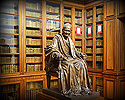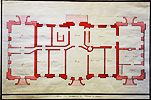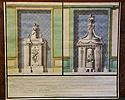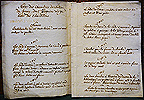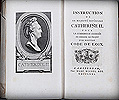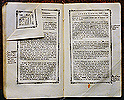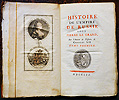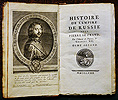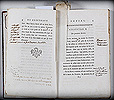Catherine the Great's unrealized project
Materials from the Voltaire Library
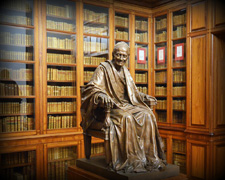 On 30 May 1778, the famous French enlightener Voltaire died in Paris at the age of 84. Catherine the Great learned about these sad news from her Paris art agent Baron von Grimm. The Empress immediately wrote to him from her summer residence Tsarskoye Selo (Tsar's Village), "... in the autumn, returning to the city (St. Petersburg), I will pack the letters from the great man to me and will send them to you. I have a lot of them. But if possible, buy his library and everything that's left of his papers ... I will willingly and generously pay to his heirs ... I will provide a special room for his books...".
On 30 May 1778, the famous French enlightener Voltaire died in Paris at the age of 84. Catherine the Great learned about these sad news from her Paris art agent Baron von Grimm. The Empress immediately wrote to him from her summer residence Tsarskoye Selo (Tsar's Village), "... in the autumn, returning to the city (St. Petersburg), I will pack the letters from the great man to me and will send them to you. I have a lot of them. But if possible, buy his library and everything that's left of his papers ... I will willingly and generously pay to his heirs ... I will provide a special room for his books...".
Grimm spread information of Catherine II's intentions to buy VoltaireŌĆÖs library, all over Western Europe. It was also announced the creation of a ŌĆ£memorialŌĆØ or a ŌĆ£museumŌĆØ in the writer's honor near the Imperial Summer Palace in Tsarskoye Selo, a suburb of St. Petersburg. The Empress planned to build a replica of the estate Ferney, house of Voltaire, similar to the original in every detail. That is why Catherine asked Grimm to give her a description of the Ferney ch├óteau: its location, the number of apartments, interiors etc.
"Please send me the facade of the Ferney château and, if possible, the layout of the apartments inside. For either the park of Tsarskoye Selo will not exist, or the Ferney château will come and take its place. I must also know which rooms of the château face the north and which the south, the east and the west, and it is also crucial to know if Lake Geneva can be seen from the château windows, and from which side, likewise for Mount Jura".
On the Empress's request, the architect Leonard Racles created accurate measured plans of the Voltaire's house. They were sent to St. Petersburg along with an interesting demountable model of the house and samples of walls and furniture upholstery.
Not all of these commemorative projects reached fruition. The Ferney ch├óteau has never got built in Tsarskoe Selo. The construction hasn't even started. Catherine contented himself with acquiring the philosopherŌĆÖs books and manuscripts. The library was sold by Marie-Louise Denis, VoltaireŌĆÖs niece. Voltaire's heiress received from the Empress a large sum for the collection (135,398 livres, 4 sous and 6 deniers, the equivalent of 30 000 gold roubles). In addition, Madame Denis was given a letter signed by Catherine the Great, a casket with a portrait of the Empress, diamonds and a coffer of furs.
Jean-Louis Wagni├©re, the philosopherŌĆÖs secretary and librarian, was commissioned to deliver Voltaire's library to St. Petersburg. Wagni├©re entered VoltaireŌĆÖs service at the age of 14 as his valet de chambre, and then, over the years, became the VoltaireŌĆÖs right-hand man. In early August 1779, the books and manuscripts of Voltaire's works arrived in St. Petersburg by a boat specially chartered by Catherine II. They were arranged in the Winter Palace (today, the Hermitage Museum) and became part of the EmpressŌĆÖs private library.
In 1861, the Voltaire Library was transferred to the Imperial Public Library, now the National Library of Russia.
Below you will see samples of walls and furniture upholstery, a copy of the model of the Ferney ch├óteau (the original is now housed in the Hermitage) and its plans, books and manuscripts from the Voltaire Library, as well as the Ferney catalogue — the first catalogue of the great thinker's library.
A. Zlatopolskaya and O. Simbirtseva.
Photographs by N. Nikolaev



